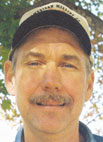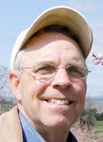The name of the game is to sell pounds and color, not color alone,” explained Gene McBride. “Depending on a producer's cow herd, the right bull could provide up to 75 to 100 more pounds, which then translates to more money.”
That’s the nutshell explanation Gene gives when asked about his cattle operation in Fulton County near Salem, Ark. Gene raises purebred bulls to sell to local producers, but goes about it differently than many.
“I produce Black Angus, Red Angus and Charolais bulls to sell locally to commercial producers,” he explained. “A person can’t sell 30 to 40 bulls of one breed. You have to diversify to provide the bulls and breeds buyers in the area want.
“It’s a lot easier for me to sell 10 bulls of three different breeds,” he reasoned. “With many small producers in the area, they like to be able to buy local, and I can provide them with that option with a diversified bull selection.”
Gene explained that he likes to keep about 100 cows to raise calves. “I am currently building my Red Angus herd and only have about 15 cows. I have 25 Black Angus mamas and the remainder are Charolais cows.
“I own 200 acres and rent an additional 540 acres in two different farms,” Gene said. “All the farms are within 10 miles of each other around Salem, but that’s still a lot of ground to cover in a day doing chores.”
That’s one of the main reasons Gene farms as he does. “My goal is to provide commercial cow/calf operators with bulls that are going to produce a 700 pound calf at weaning time. But even more importantly, these bulls have to be easy calving as well as have the growth and gain ability with a good disposition.
“I am self employed as a certified general real estate appraiser licensed in Missouri and Arkansas, and in the time left after that, I care for the cows. If a calf is born weighing 90 pounds or more, it is culled at weaning. I won’t sell a bull with such a large birth weight because of the calving problems it might cause commercial producers and their cows.
“The same thing goes for disposition. If the calves raise their head or seem to be nervous with a poor disposition, they are culled at weaning,” he explained. “I wouldn’t want to sell a bull that I could not trust to have a good disposition. Life is too short to have to tolerate a bull that has a bad disposition, therefore they go as steers.”
Gene’s Background
Gene was born and raised on a farm. “I learned to milk cows by hand and how to properly care for livestock at early age,” he recalled. “When I was in seventh grade I started working for William Whitaker in Salem. He raised registered Polled Herefords.
I worked after school, on weekends and summers hauling hay, breaking bulls and heifers to lead and learning about the purebred cattle industry,” recalled Gene. “I worked out my first Polled Hereford heifer and have been associated with purebred cattle ever since.
“After graduating from Arkansas State University with a degree in agricultural education, I got back into cattle, raising registered Brahma, Santa Gertrudis and Simmental,” he recalled. “Over time, you learn what breeds adapt best to your area and what the commercial producers want. These three breeds I produce now are what producers want. I am looking into Horned Herefords for my next venture.
“I have had the Charolais since the early 80s, started raising Black Angus in the early 90s and have had the Red Angus cattle for two years now.
Specifics of Herd Management
“I don’t have a specific calving season because I leave my bulls with the cows all year long,” he said. “Many people don’t like that, but for me, if I have cow that’s not bred, she’s not producing a calf or a profit. Also, over the average life of a cow, with this method the cow will produce one more calf than normal.
“Some producers buy bulls year round and when a bull is needed I can provide that bull. Other purebred producers in the market area will not have bulls to sell year round.”
Gene works all the cattle on his farm himself. “I work them through the chute twice a year,” he explained. “All cows are wormed twice yearly, blacklegged and receive a shot of Cattlemaster 4 and VL5 once yearly. I tag and weigh all calves when born and black leg and worm them at weaning and again at 12 months.
Nutrition is something Gene believes strongly in. “You can’t starve a nickel out of cow,” he chuckled. “You have to provide the necessities – good water, lots of grass and the best mineral available.”
Gene does this through salt and mineral and feeding the best hay during the winter months. “I buy hay for my cattle,” he explained. “For the investment of equipment, labor and hay baling expenses as well as keeping your best fields for hay production, it is more economical for me to purchase the hay needed for winter feeding,” he added.
Advice
“The best advice I can give is that a herd bull is the most important part of your farm operation. You have to study your cow herd and decide what breed of bull would provide you, the cow/calf producer, with the heaviest calf at weaning that will create the largest paycheck. If you can do that, you can survive in this business," Gene concluded.






